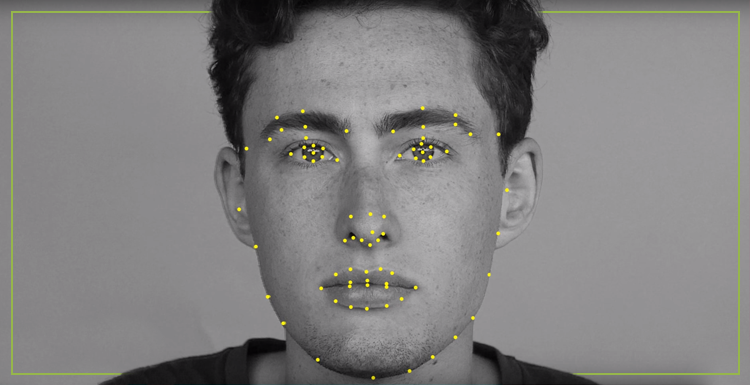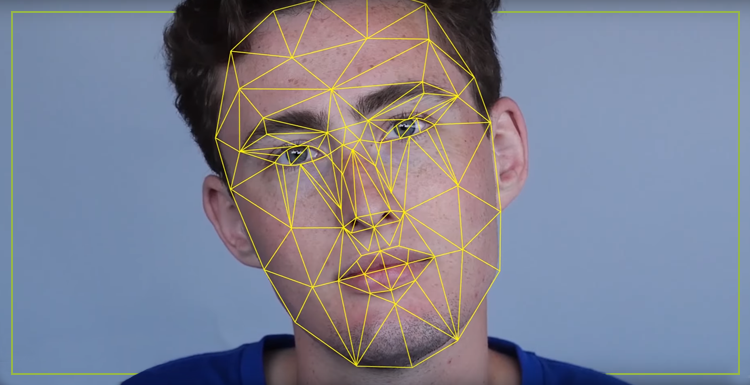Updated: June, 2020
Needless to say, today’s app market is brimming with offers and the demand for mobile app development is high. For the same reason, it can be hard to stand out from the crowd. The truth is, with good marketing, you can get a user to download your app. But would they actually use it? That is the question worth pondering on.
People want their experience to be totally personalized today. So it is not enough to build a good quality app. You need to make them stick with your mobile app. But how? Let machine learning do the job. Machine learning technology can transform your app into an app of your users’ dream.
Sounds tempting? Believe me, not until you’ve seen it with your own eyes. In this article, you’ll find seven mobile applications that once used machine learning and have never looked back since.
Vocabulary
But first, let’s get fluent with the vocabulary:
- Artificial Intelligence (AI) – intelligence displayed by computers.
- Machine learning – teaching computers to recognize patterns in the same way as human brains do. It is learning from examples and experience instead of hard-coded programming rules and using that learning to answer questions.
- A neural network – a group of software and hardware mimicking the work of human brain. It is organized layers of interconnected artificial neurons; every layer can be taught to prioritize criteria over others, by their weights.
- Deep learning – a way to train neural networks to solve problems that they were not programmed to solve.
- Linear regression – a machine learning algorithm that is based on the linear relationship between the input variables and the single output variable.
- Logistic regression – a machine learning algorithm for modeling a binomial outcome with one or more explanatory variables.
So, now the difficult part is behind and I can show you seven machine learning application examples that use ML in a right way.
List of the top app examples that use machine learning
#1 Netflix

Netflix is one of the most obvious examples of Machine Learning in mobile apps. Today, everyone knows what it is.
But, why?
The reason is, it just knows what you want to watch, before you want to watch it!
First, you may think, ‘Magic?’
Well, not exactly, but a few decades ago it could have been considered magic! As we know, the magic behind this trick is machine learning.
Netflix has grown from a DVD rental website to a global streaming service. And it has everything to do with machine learning!
At Netflix, they use Linear regression, Logistic regression, and other machine learning algorithms. All these scary words mean that Netflix has perfected its personalized recommendations by means of ML.
Netflix’s content is classified by genre, actors, reviews, length, year, and more. All these data go into machine learning algorithms.
ML algorithms at Netflix learn from a user’s actions. For example, yesterday I watched a new TV show, and, in my opinion, it wasn’t really good, so I will not watch the second episode. Based on my behavior, Netflix understands that I do not appreciate this kind of TV show, and puts it far away from my recommendations. The same thing happens when you watch just a trailer, give a bad review, or if you pick the seventh recommendation instead of the first. Machine learning algorithms adapt to a user’s behavior to provide extremely personalized content.
Netflix on Google Play Netflix on App StoreDo you know how Netflix hit a home run? Check this post: How to Create a Video Streaming Website like Netflix, Amazon, or Hulu.
#2 Tinder

Take Tinder. Everybody knows it as a dating app that finds your soulmate. The thing is, to find you a perfect match, Tinder uses all kinds of love spells and potions, and one of them is machine learning. The potion is called ‘Smart Photos’ and it increases a user’s chances of finding a match.
But, how is it possible?
With the help of machine learning, this feature shows a random order of your profile photos to people and analyzes how often they’re swiped right or left. This knowledge allows Tinder to reorder your photos by putting the most popular ones first. This system is honing itself constantly and the level of improvement depends on the input – the more the better.
This way, you’ll get better results and find your soulmate in no time.
Tinder on Google Play Tinder on App StoreWant to know how Tinder works, check this out: How to Build a Dating App like Tinder… only Better
#3 Oval Money

If you are wondering how to implement machine learning in a finance mobile app, Oval Money a great example for you! We all struggle to save money. This app is here to help us like a superhero. Let’s say, Oval Money is Batman while machine learning turns out to be its loyal companion, Robin. This team fights for your savings. Machine learning, aka ‘Robin’, is used to analyze a user’s previous spending habits and other users’ transaction behavior. Based on this analysis, it offers users different easy-to-follow strategies that will help them avoid extra spending.
And thanks to machine learning, it gets better every time you use it. So if you are thinking about adding a bit of superpower to your finance mobile app, machine learning is a solution for you.
Oval Money on Google Play Oval Money on App Store#4 Snapchat

The most common use of machine learning is for recommendations, as you have already seen in this article. But let’s not forget about other machine learning abilities.
Look.
Snapchat’s filters are a fantastic combination of augmented reality and machine learning algorithms for computer vision.
So how do Snapchat filters work?
The first step is to detect a face. The program sees a photo as a set of data for the color value of each individual pixel. But how does it know which part of the image is a face?
Well, the clue is looking for areas of contrasts, between light and dark parts of the image. By repeatedly scanning through the image data calculating the difference between the grayscale pixel values underneath the white boxes and the black boxes, the program can detect faces.
For instance, the bridge of the nose is usually lighter than the surrounding area on both sides, the eye sockets are darker than the forehead, and the middle of the forehead is lighter than its sides. This kind of algorithm won’t find your face if you’re really tilted or facing sideways, but they’re really accurate for frontal faces.

But in order to apply a flower crown, the app needs to do more than just detect a face. It has to locate facial features. According to the patterns, it does this with an ‘active shape model’ – a statistical model of a face shape that’s been trained by people manually marking the borders of facial features on hundreds of sample images. The algorithm takes an average face from that trained data and aligns it with the image from your phone’s camera, scaling it and rotating it according to where it already knows your face is located. But it’s not a perfect fit so the model analyzes the pixel data around each of the points, looking for edges defined by brightness and darkness.

Once it locates your facial features, those points are used as coordinates to create a mesh – a 3D mask that can move, rotate, and scale along with your face as the video data comes in for every frame and once they’ve got that, they can do a lot with it. They can deform the mask to change your face shape, change your eye color, and accessories, and set animations to trigger when you open your mouth or move your eyebrows.

So why go through all this trouble just to give people a virtual flower crown? Well, Snapchat sees a revenue opportunity here. In a world that’s flooded with advertisements, maybe the best hope that brands have to get us to look at their ads… is to put them on our faces.
Want more insights into the Snapchat app success? Check this out: How to Make an App like SnapChat.
Snapchat on Google Play Snapchat on App Store#5 Google Maps

I’m sure, that you struggled to find a parking spot at least a few times in your life. Google Maps is using machine learning to make your life easier.
Ok, prediction of a movie preference is a common thing now, but how can machine learning know where I can park?
The answer lies, as always, in data analysis. Google’s researchers collected and studied data from over 100K people. They asked questions like ‘How long did it take you to find parking?’ Then to create training models, they used the anonymous aggregated information from users who decided to share their location data. I’m one of those people, so if I circle around after reaching the destination, it means that I’m having trouble finding a parking spot in a particular area.
Then with a standard logistic regression model, the app leverages the features based on the dispersion of parking locations and predicts when, where, and how difficult finding an empty spot will be.
So when you press the ‘find parking’ tab on the directions card, you’ll see a list of parking spots near you and the walking directions to your destination.
Google Maps on Google Play Google Maps on App Store#6 ImprompDo

The next mobile app is a dream for those who can’t get rid of a procrastination habit or those in the search of an idea for a machine learning productivity app. ImprompDo helps people get things done without demanding scheduling.
The app finds a golden mean between your to-do list and the time you have. It finds suitable moments for you to complete the needed tasks.
Machine learning gives the app an opportunity to discover suitable moments for showing push notifications.
But in order for this app to work perfectly, you need to use it for a while and let it learn your time management behavior. It will monitor your location and what you’re doing. The mobile app can even prioritize things on your to-do list for you.
#7 Dango

And last but not least is the app called Dango. This mobile app uses machine learning to solve the biggest world’s problem like finding a perfect emoji. Dango is not an ordinary mobile app, it’s a floating assistant that can be integrated into different messengers.
Based on what you’re writing, Dango can predict emoji, stickers, and GIFs. To do this, Dango needs to understand the meaning of the words you’re writing. For this purpose, it uses deep learning to train neural networks. The training starts with showing millions of real-life examples of emoji usage to the neural network.
At the beginning, the neural network just tries to guess randomly, but as time passes, it matches its millions of values so it does better in that example the next time. So when it’s completely trained, it understands emotions and jokes. As a result, you get meaningful suggestions for emojis and GIFs to enhance your texting.
Dango on Google PlayIdeas for mobile apps
Now that you know how popular mobile apps use machine learning to their benefit, it’s time to figure out the way to use ML to your benefit. Here are some machine learning implementation ideas.
Machine learning and e-commerce
The use of machine learning in e-commerce mobile apps can provide relevant information to users while they search for products. With its help, the app can recommend them the right products based on their interests, and even analyze the fashion trends and sales information and give predictions in real-time.
Sports forecasting apps
For the sports forecasting mobile apps, machine learning can be of great help. Machine learning model written right can predict the outcome of any sports game with an extreme accuracy.
Healthcare apps
In the healthcare apps niche, machine learning can play the role of doctor/adviser. So it could analyze the symptoms and give the needed solutions.
These ML apps also can forecast the possibility of a headache and recommend ways to prevent one.
Finance apps
Finance mobile apps with machine learning implementation can analyze the history of previous transactions and utilize the historic data to offer users unique deals that are going to be perfect for each specific user. Also, it can be used to manage users’ income and expenditures by linking their accounts and credit cards.
Food/restaurant apps
The app with machine learning can take orders, answer and ask questions, suggest a perfect recipe. Based on your previous orders, the app can suggest a new item on the menu or deal users might like.
For the food delivery apps development, machine learning can offer delivery time estimate based on real-time traffic conditions.
Transportations
Machine learning can be used to provide an estimated time of arrival and cost to riders, offer detailed real-time information on maps to drivers, and more.
Time management apps
Time management apps can employ machine learning to find suitable times for you to complete tasks and to prioritize things on your to-do list.
Sports apps
Machine learning in a sports mobile app can read the sensors and genetic data available to tailor a deeply individual workout program. It can also be used for tracking users training efforts and maintaining a personalized training journal for them.
Image editing apps
An image editing app that uses machine learning can offer a sizable selection of different photo filters that you can apply by just telling the bot what to do.
Travel apps
A travel app that uses ML can allow users to ask questions about their future travels, such as ‘What’s the cheapest hotel in New York?’ So, this way users are provided with personal travel assistant.
Weather forecasting apps
A weather app with ML can predict and send daily forecasts and alerts.
Conclusion
Now, you know what are the most popular and successful use cases of machine learning in mobile apps. Hope, they inspire you for some interesting machine learning mobile app ideas of your own. Are you ready to build the next Tinder or Snapchat? You’re just a few steps away from creating the mobile app of your users’ dream.


Very nice post here thanks for it .I always like and such a super contents of these post.Excellent and very cool idea and great content of different kinds of the valuable information’s.
Thanks, Syed Imranbasha!
Nice article great information.
Fantastic blog extremely good well enjoyed with the incredible informative content which surely activates the learners to gain enough knowledge. This, in turn, makes the readers explore themselves and involve deeply in the subject. Wish you to dispatch similar content successively in the future as well.